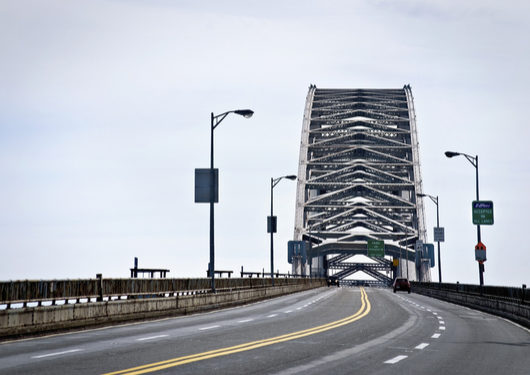
Visit Our Sponsors |
|
|
|
|
|
|
|
|
|
|
|
|
|
|
|
|
|
|
|
|
|
|
|
|
|
|
|
|
|
|
|
|
|
|
|
|
|
|
|
|
|
|
|
|
|
|
|
|
|
|
|
|
|
|
|
|
|
|
|
|
|
|
|
|
|
|
|
|

There is a pressing need for improvements in transportation infrastructure across multiple modes and stages of the system: ports, ships, airports, trucks, trains and highways. But no single element, no matter how efficient it might be, can alone ensure the efficient flow of cargo.
The Port of New York and New Jersey is acutely aware of the interdependence of the many pieces that make up this complex puzzle. That’s why we launched the Council on Port Performance, an advisory body made up of all stakeholders involved in providing transportation and logistics services through the port.
The Council’s formation in June of 2014 was a direct response to numerous trends impacting the port’s present-day business, as well as its future. They include steady growth in cargo volumes, the introduction of larger containerships, expansion of the Panama Canal, and intensified competition from other port regions.
The Council was an outgrowth of the Port Performance Task Force, a six-month initiative to draw up a series of recommendations on how the port should address those key challenges. It, too, was a collaborative effort, involving the participation of the Port Authority, longshore labor, terminal operators, ocean carriers, truckers, railroads, equipment providers, maintenance personnel, logistics service providers and shippers. They came together in five working groups, covering terminal operations, drayage, intermodal equipment, rail infrastructure, and port awareness and marketing.
Both the Task Force and Council on Port Performance represent a whole new approach to driving collaboration, transparency and communication among the players that are responsible for the port’s continuing success. Previously, those entities would work within their individual siloes, generally reaching out only to the parties with which they had direct business relationships and rarely, if ever, working collaboratively with their competition. It became clear to all participants, however, that a fragmented approach to port development would not yield the desired results.
Take the project to raise the roadway of the Bayonne Bridge, which connects New Jersey with Staten Island. This $1.6 billion initiative, involving four years of permitting and another four of construction, was itself essential for allowing access by the big new containerships into marine terminals west of the bridge. Yet it couldn’t be carried out in isolation. At the same time, similar amounts of money had to be invested by terminal operators and the U.S. Army Corps of Engineers in the expansion of berths and dockside acreage, as well as deepening waterways. The work required the acquisition of new ship to shore container cranes, cargo-handling equipment and terminal-operating systems. Failure to execute on any one of those elements would have frustrated the objective of the Bayonne Bridge project.
The success of the Council on Port Performance has driven home for its participants something that has always been true: We’re all in this together. Each stakeholder has a role to play in improving everyone’s bottom line. So when the 24 Council members assemble for their bi-monthly meeting, with each constituency granted equal voice and voting power, they don’t just talk about their own affairs. They delve into one another’s concerns, and seek ways in which they can work across the old siloes that once blocked true collaboration.
It’s more than a mechanism for discussion. In its three years of existence, the Council has made some two dozen recommendations for action. Its work has led directly to creation of the first-ever portwide community system, whereby every terminal is on the same I.T. platform.
The Council has also proved instrumental in addressing emerging issues of concern, such as cyber security. Following the global ransomware attack that affected operations on one of the terminals for nearly three weeks, the Council identified best practices in the response and recommendations on how to minimize the impact the next time it happens, which seems to be inevitable these days. Having the group already in place allowed port interests to immediately address the situation and develop a plan for the future.
One of the most critical issues facing ports, carriers and logistics providers today is that of labor. In an industry that depends on reliability of service, it’s essential that operators be able to attract and retain workers. With that consideration in mind, the Council has launched a new initiative to promote workforce development. It focuses on three main areas:
There’s no better example of the value of true collaboration than the coming together of all stakeholders to address the human element in the supply chain. After all, if we don’t have the right workforce in place, none of those expensive infrastructure projects will be worth the time and resources expended on them.
Future cooperative efforts by the Council could involve taking on the controversial issue of regional and nationwide infrastructure funding. Again, collaboration is key, requiring the participation of both the private and public sectors – in fact, every imaginable stakeholder in the global supply chain. Each of us must look beyond our fence line, for the good of all. Our nation’s economic well-being depends on it.
Resource Link:
The Port Authority of New York and New Jersey
RELATED CONTENT
RELATED VIDEOS
Timely, incisive articles delivered directly to your inbox.

